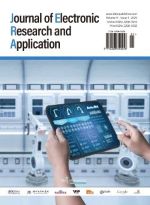Abstract
This study aims to construct a virtual twin testing framework for the safety of the intended functionality of intelligent connected vehicles to address the safety requirements of intelligent driving and transportation systems. The research methods include the construction of a theoretical model of safety for intelligent connected vehicles based on the concept of virtual twins, the correlation study between key concepts and functional safety, and the application research of virtual twin technology in the safety testing of intelligent connected vehicles. The results reveal that the virtual twin testing framework can effectively enhance the functional safety of intelligent connected vehicles, reduce development costs, and shorten the product launch cycle. The conclusion suggests that this framework provides strong support for the healthy development of the intelligent connected vehicle industry and has a positive impact on the safety and efficiency of intelligent transportation systems.
References
Awasthi SS, Imran MIIS, Arrigoni S, et al., 2025, Bayesian Optimization Applied for Accelerated Virtual Validation of the Autonomous Driving Function, ArXiv, http://arxiv.org/abs/2507.22769v2
Mo L, Hua M, Sun H, et al., 2023, Study on the Impacts of Hazardous Behaviors on Autonomous Vehicle Collision Rates Based on Humanoid Scenario Generation in CARLA, ArXiv, http://arxiv.org/abs/2307.10229v1
Kloeker L, Liu C, Wei C, et al., 2023, Framework for Quality Evaluation of Smart Roadside Infrastructure Sensors for Automated Driving Applications, ArXiv.
Zhang H, Yue X, Tian K, et al., 2025, Virtual Roads, Smarter Safety: A Digital Twin Framework for Mixed Autonomous Traffic Safety Analysis, ArXiv, http://arxiv.org/abs/2504.17968v1
Wang K, Nonomura K, Li Z, et al., 2024, Augmented Intelligence in Smart Intersections: Local Digital Twins-Assisted Hybrid Autonomous Driving, ArXiv, http://arxiv.org/abs/2410.12163v2
Xia L, Sun Y, Swash R, et al., 2021, Smart and Secure CAV Networks Empowered by AI-Enabled Blockchain: The Next Frontier for Intelligent Safe Driving Assessment, ArXiv, http://arxiv.org/abs/2104.04572v5
Paranjape A, Patwardhan Y, Deshpande V, et al., 2023, Voice-Based Smart Assistant System for Vehicles using RASA, ArXiv, http://arxiv.org/abs/2312.01642v1
Emami Y, Zhou H, Gaitan MG, et al., 2025, From Prompts to Protection: Large Language Model-Enabled In-Context Learning for Smart Public Safety UAV, ArXiv, http://arxiv.org/abs/2506.02649v1
Collin A, Bilka A, Pendleton S, et al., 2021, Safety of the Intended Driving Behavior Using Rulebooks, ArXiv, http://arxiv.org/abs/2105.04472v1
Wu K, Li P, Cheng Y, et al., 2024, A Digital Twin Framework for Physical-Virtual Integration in V2X-Enabled Connected Vehicle Corridors, ArXiv, http://arxiv.org/abs/2410.00356v2
Nikouei SY, Xu R, Chen Y, et al., 2019, Decentralized Smart Surveillance through Microservices Platform, ArXiv, http://arxiv.org/abs/1903.04563v1
Martins V, Rufino J, Fernandes B, et al., 2018, Personal Virtual Traffic Light Systems, ArXiv, http://arxiv.org/abs/1809.07829v1
Czarnecki K, Kuwajima H, 2023, STEAM & MoSAFE: SOTIF Error-and-Failure Model & Analysis for AI-Enabled Driving Automation, ArXiv, http://arxiv.org/abs/2312.09559v2
Limbasiya T, Das D, Sahay SK, 2019, Secure Communication Protocol for Smart Transportation Based on Vehicular Cloud, ArXiv, http://arxiv.org/abs/1912.12884v2
Beaver LE, Chalaki B, Mahbub AMI, et al., 2019, Demonstration of a Time-Efficient Mobility System Using a Scaled Smart City, ArXiv, http://arxiv.org/abs/1903.01632v2
